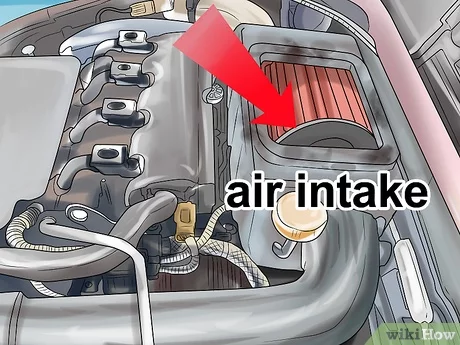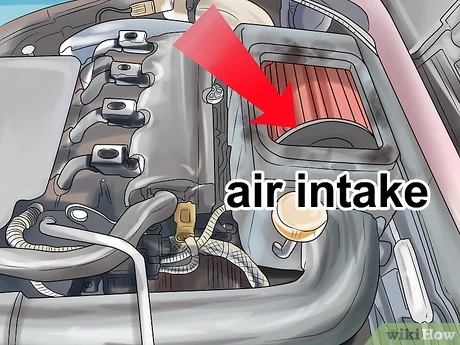As a car owner, you may encounter situations where your vehicle won’t start, no matter how many times you turn the key. This can be a frustrating experience, especially when you’re in a hurry. One solution to this problem is to use starter fluid, which helps to ignite the fuel mixture in the engine and get it running. But where exactly should you spray starter fluid in your car?
The answer to this question may vary depending on the make and model of your vehicle. In general, however, there are a few key places where you can apply starter fluid to get your car started. In this article, we’ll explore the different areas where you should spray starter fluid and provide you with some helpful tips to ensure a smooth and successful start-up. So, if you’re tired of dealing with a stubborn engine, read on to discover where to spray starter fluid in your car.
Where to Spray Starter Fluid in a Car?
To start your car using starter fluid, locate the air intake system. It is usually located behind the air filter in the engine compartment. Remove the air filter and spray the starter fluid directly into the air intake. Make sure to follow the instructions on the starter fluid can and avoid spraying too much fluid to prevent engine damage. Once done, replace the air filter and start your car.

H2: Where to Spray Starter Fluid in a Car?
Starting your car can be a frustrating experience, especially if it won’t turn over. One solution to this problem is using starter fluid to ignite the engine. But where exactly do you spray the starter fluid in a car? In this article, we’ll provide you with a step-by-step guide on where to spray starter fluid in a car.
H3: Locating the Air Intake
The first step in using starter fluid is locating the air intake. The air intake is responsible for providing oxygen to the engine, which is necessary for fuel combustion. In most cars, the air intake is located near the front of the engine compartment, usually behind the headlights or near the grille.
To locate the air intake, simply open the hood of your car and look for a black plastic pipe or a metal tube that connects to the engine. Once you’ve located the air intake, you can proceed to the next step.
H3: Preparing the Engine
Before spraying the starter fluid, it’s important to prepare the engine. Make sure that the battery is fully charged, and that the spark plugs are in good condition. You should also check the fuel system to ensure that there are no clogs or leaks.
Once you’ve checked the engine, turn off all electrical accessories, such as lights and radios, and put the car in neutral or park. You should also engage the parking brake to prevent the car from moving.
H3: Spraying the Starter Fluid
Now that you’ve located the air intake and prepared the engine, it’s time to spray the starter fluid. Remove the air filter from the air intake, and spray a small amount of starter fluid into the intake. Be careful not to spray too much starter fluid, as this can cause engine damage.
After spraying the starter fluid, replace the air filter and attempt to start the engine. If the engine doesn’t start, you may need to spray more starter fluid into the air intake.
H3: Benefits of Using Starter Fluid
Using starter fluid can be a quick and easy solution to starting your car. It can also help diagnose engine problems, as a car that starts with starter fluid may have a fuel delivery issue. Additionally, starter fluid can be used in cold weather to help the engine turn over more easily.
However, it’s important to note that using starter fluid should be a last resort, and shouldn’t be used as a long-term solution. If your car consistently requires starter fluid to start, it may be indicative of a larger problem.
H3: Vs Jumpstarting a Car
Jumpstarting a car is another common method of starting a car, and it involves using jumper cables to connect the battery of a working car to the dead battery of a non-functioning car. While jumpstarting can be effective, it requires another car and can be dangerous if not done properly.
Using starter fluid, on the other hand, can be done without the assistance of another car, and is generally a safer method of starting a car. However, it should still be used with caution and only as a temporary solution.
H3: Conclusion
In conclusion, using starter fluid can be a quick and easy solution to starting your car. Before using starter fluid, make sure to locate the air intake, prepare the engine, and spray a small amount of starter fluid into the intake. Remember to use starter fluid with caution, and only as a temporary solution.
Contents
Key Takeaways: Where to Spray Starter Fluid in a Car?
- Starter fluid is used to help start a car’s engine when it’s having trouble starting up.
- The most common place to spray starter fluid is through the air intake system, directly into the throttle body.
- Be sure to follow the manufacturer’s instructions carefully when using starter fluid, as overuse or misuse can damage your engine.
- If you’re unsure of where to spray the starter fluid, consult your car’s manual or a trusted mechanic.
- Remember that using starter fluid is only a temporary fix and shouldn’t be relied upon as a long-term solution to engine problems.
In summary, using starter fluid can be a helpful tool in getting your car’s engine started, but it should be used with caution and only as a temporary solution. Always follow the manufacturer’s instructions and don’t hesitate to seek professional advice if you’re unsure of where to spray the starter fluid.
⚠️Using Starter Fluid to Start your Car. Extreme Warning perform at your own risk
As a professional writer, it’s important to provide informative and helpful content that addresses the needs of readers. In this case, we have discussed where to spray starter fluid in a car. Knowing this information can save you time and money by avoiding unnecessary repairs and trips to the mechanic.
In conclusion, understanding where to spray starter fluid in your car can be a lifesaver when faced with starting problems. As with any car maintenance issue, it’s important to take the necessary safety precautions and consult your car’s manual before attempting any repairs. With this knowledge, you can confidently troubleshoot starting issues and get back on the road in no time.

